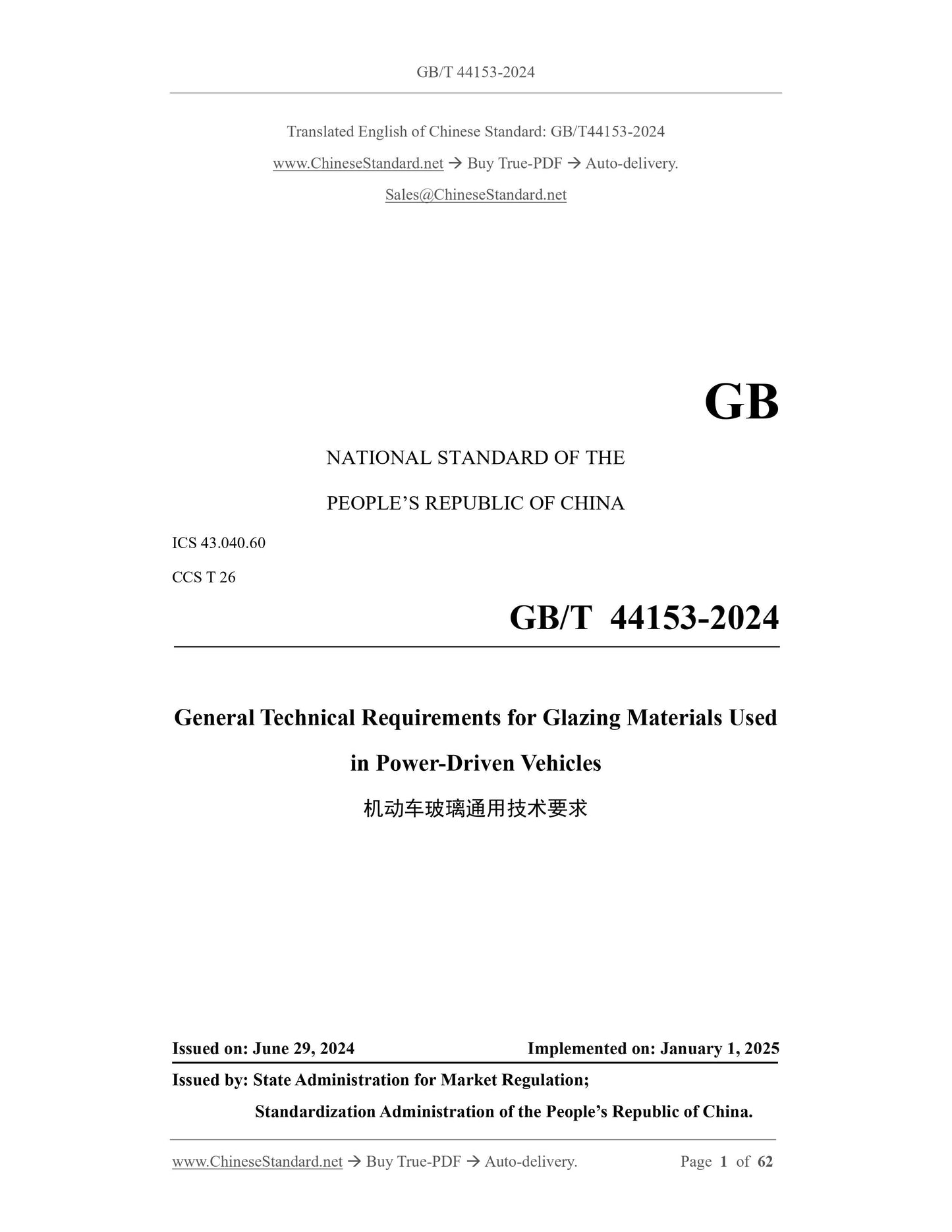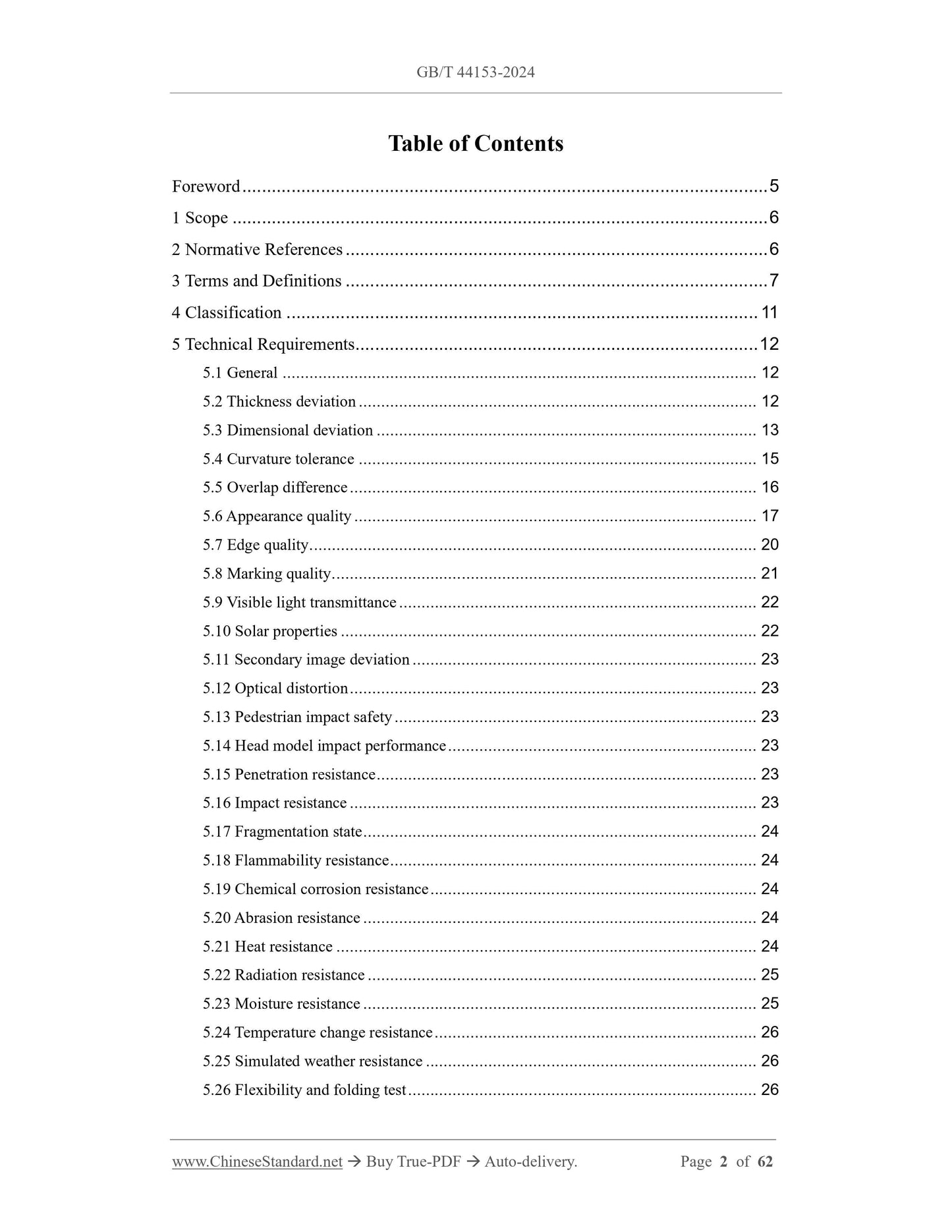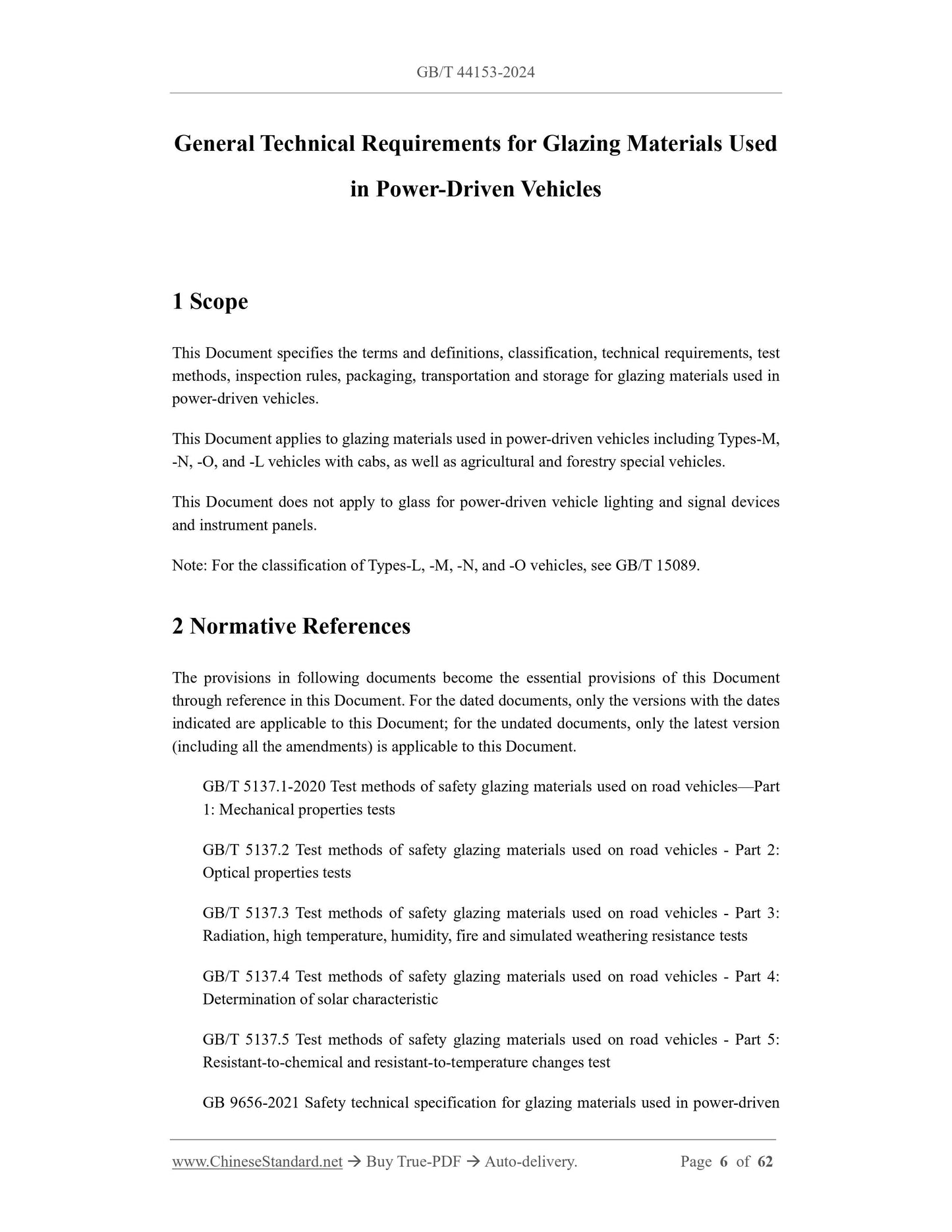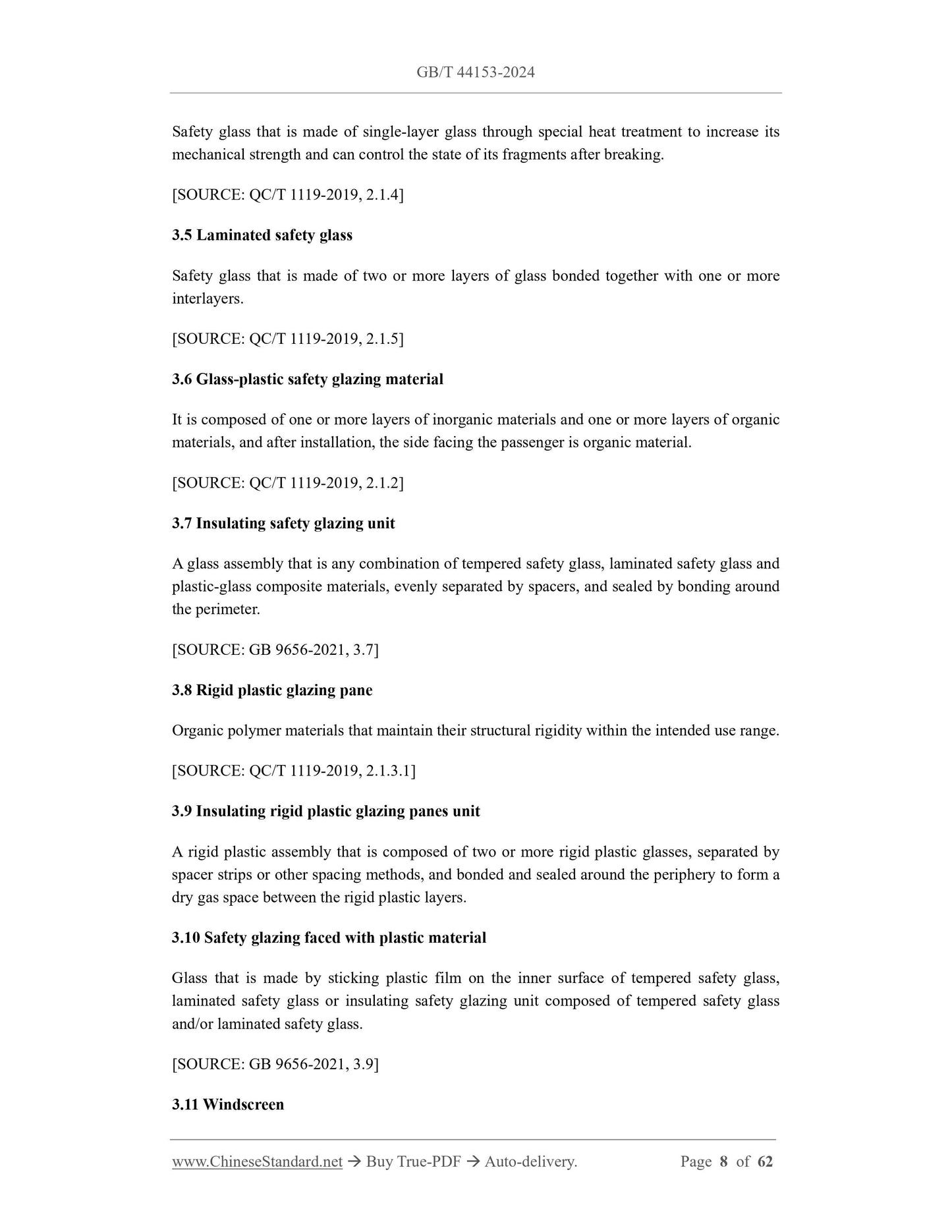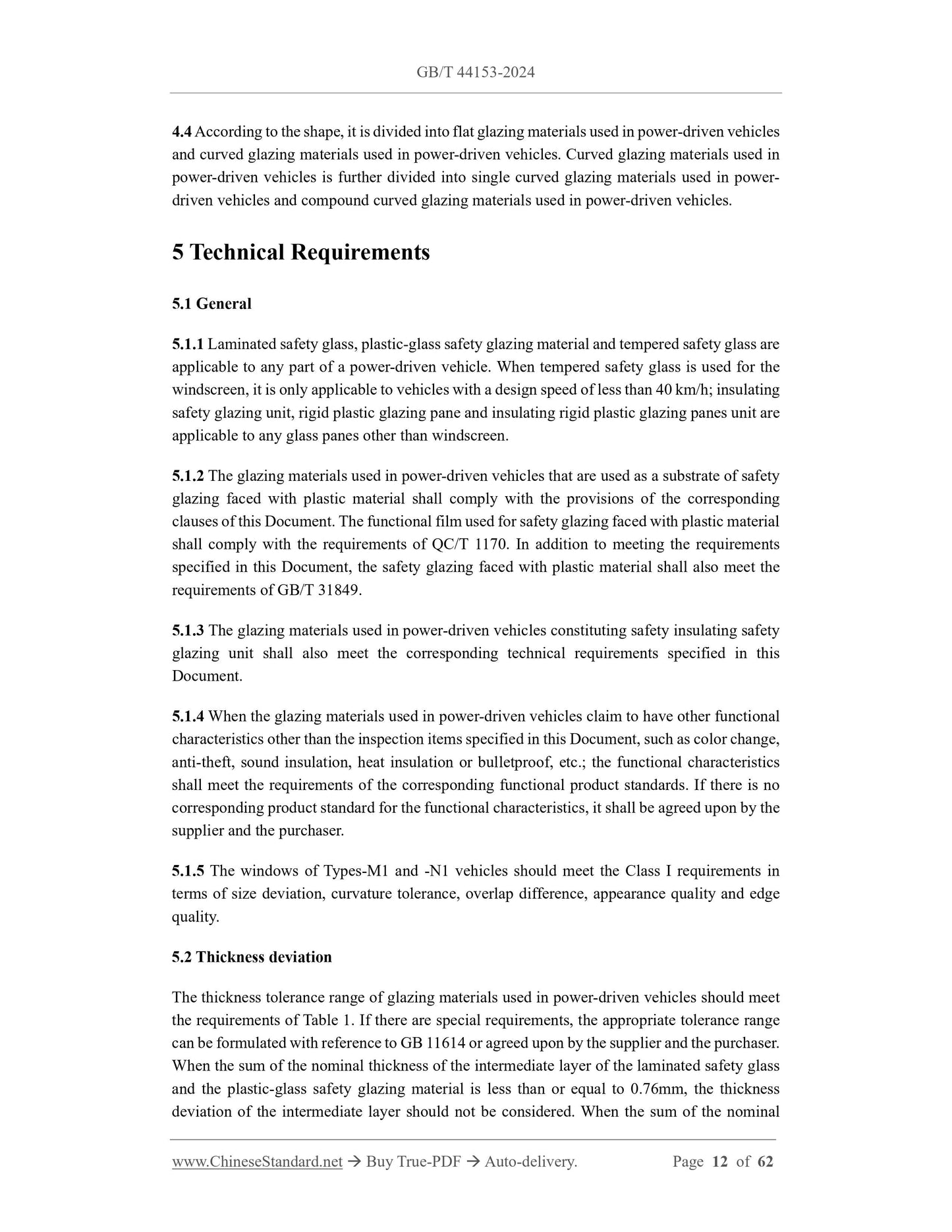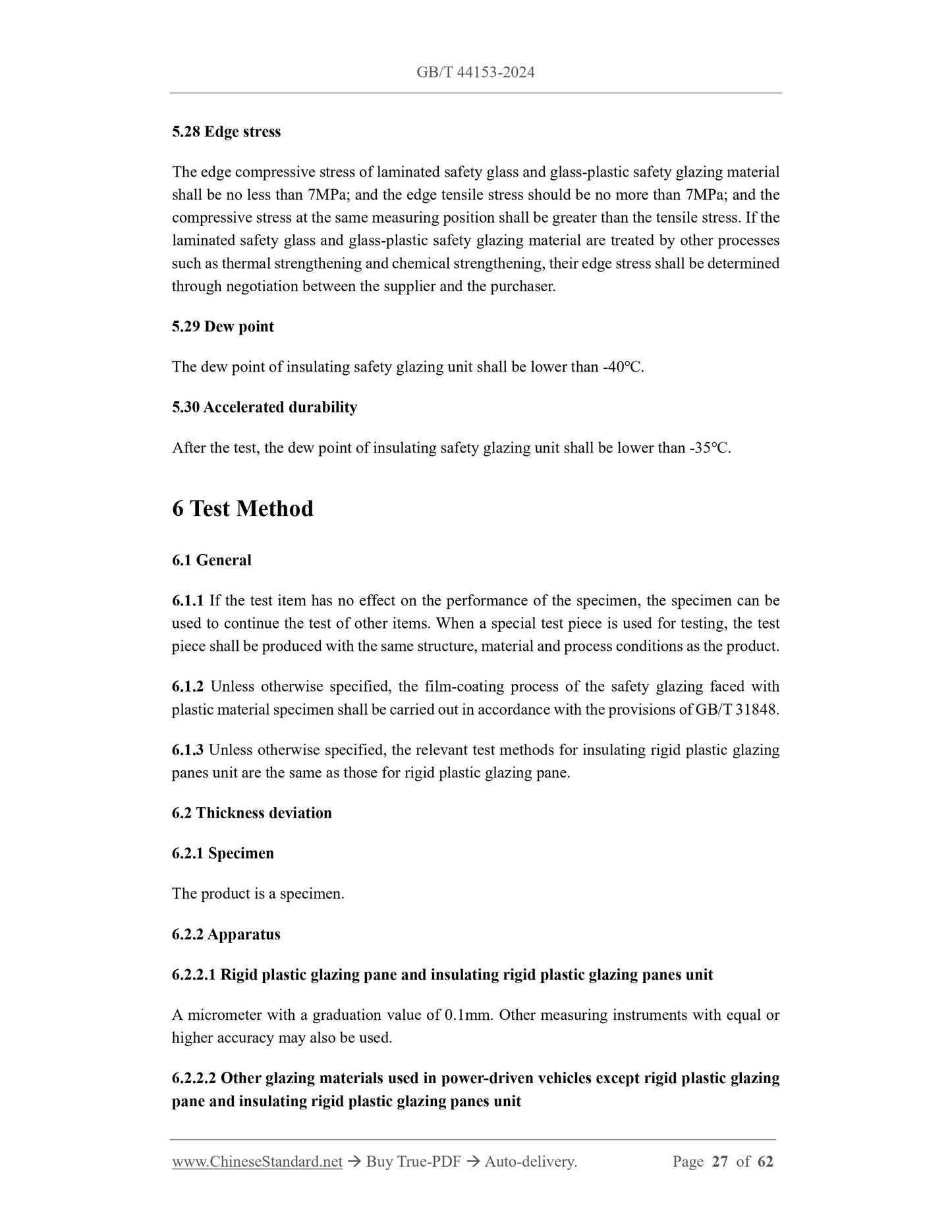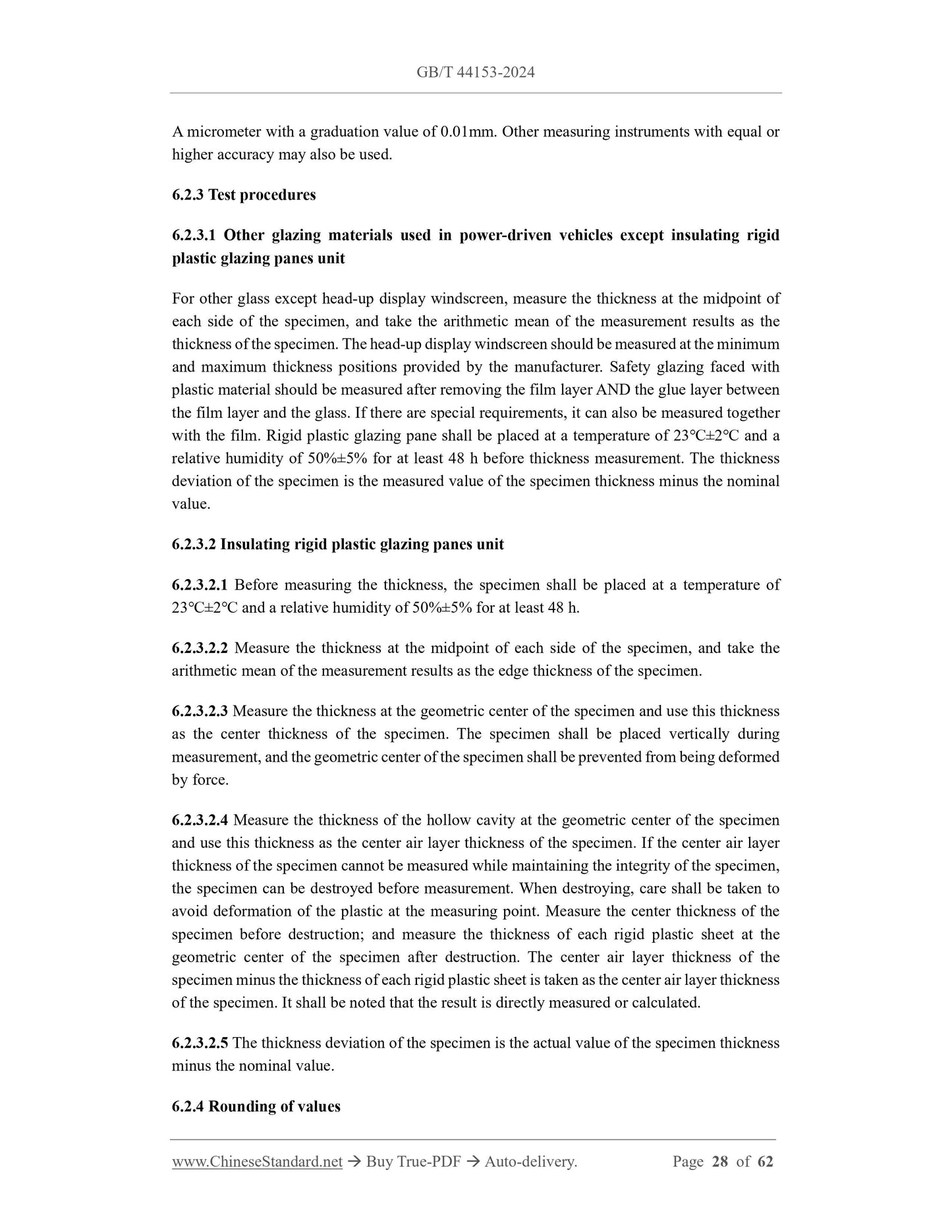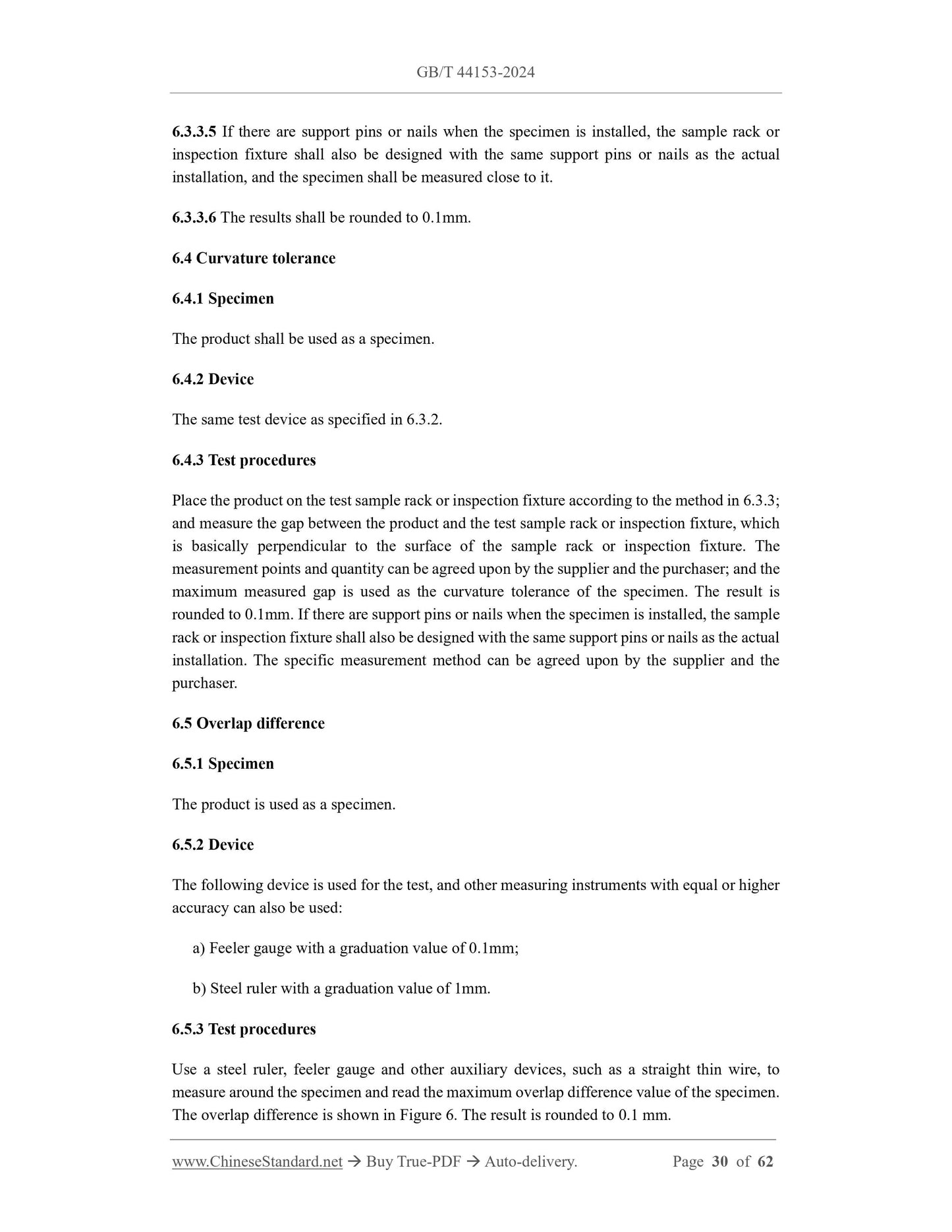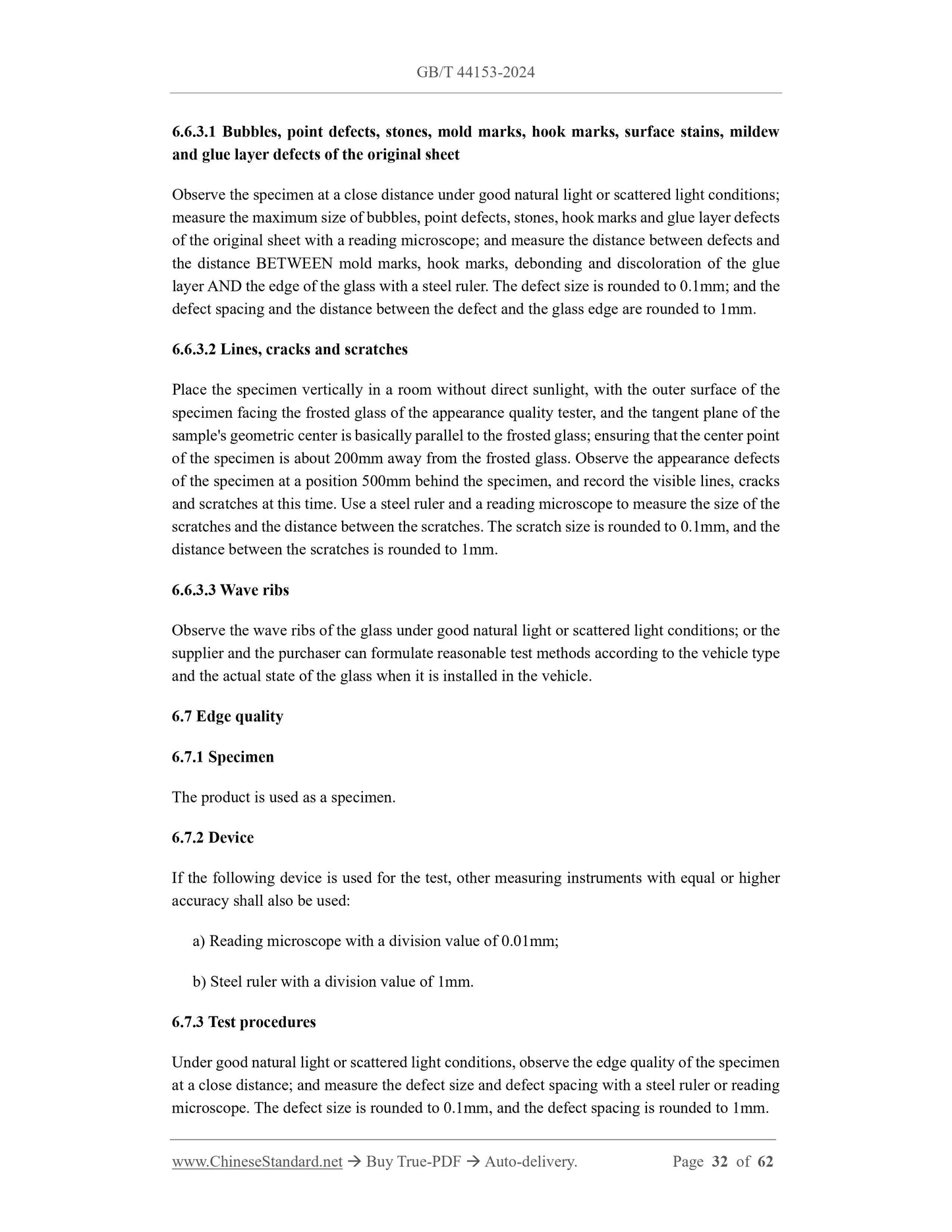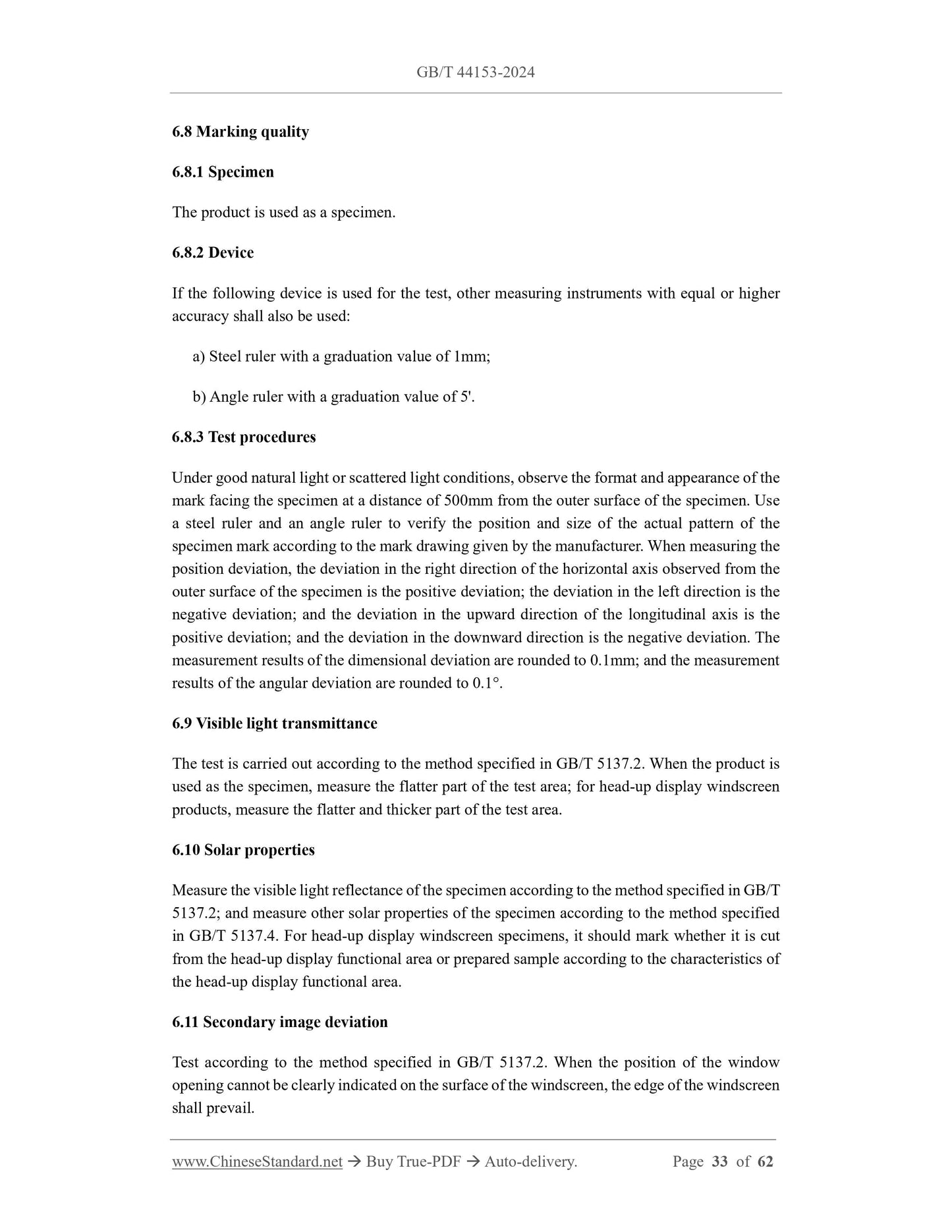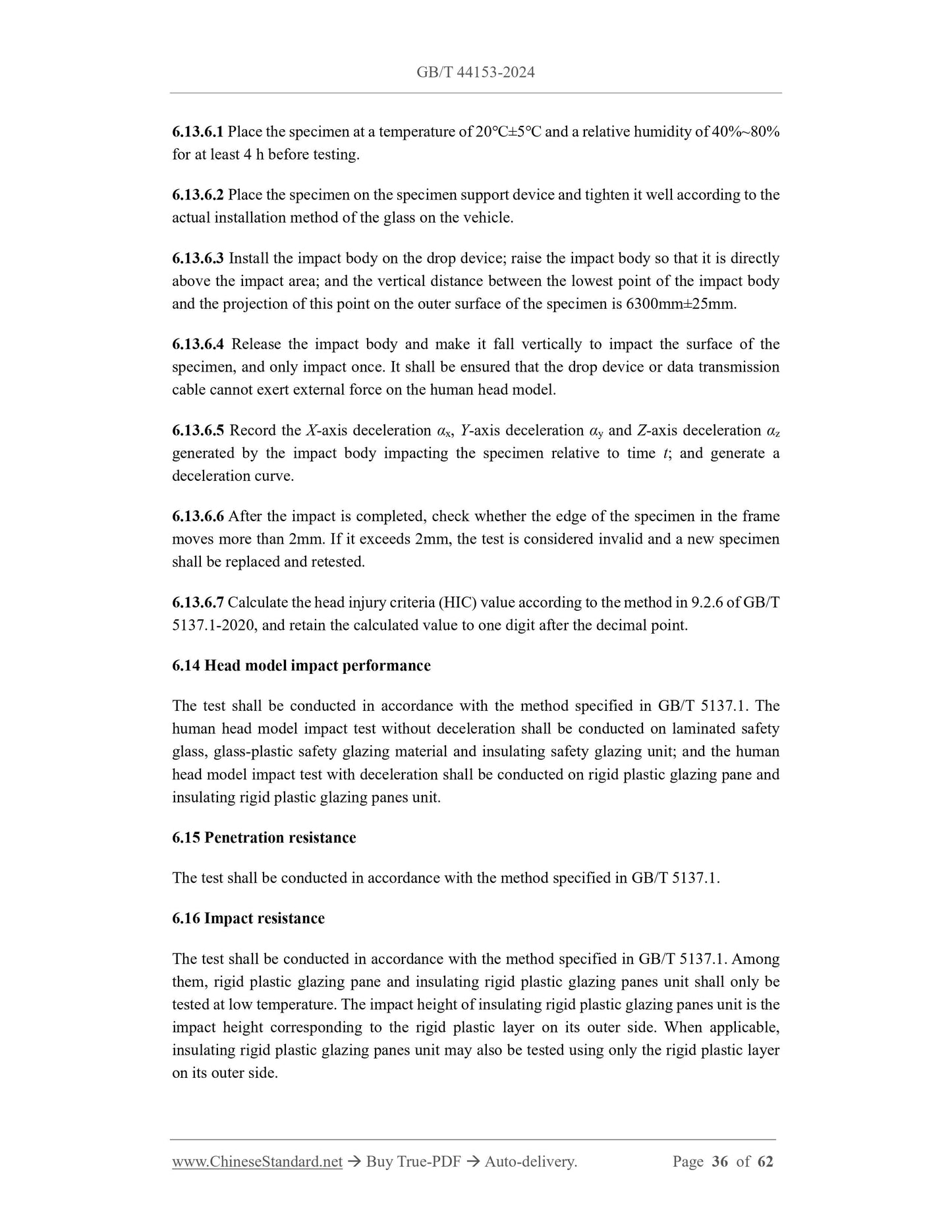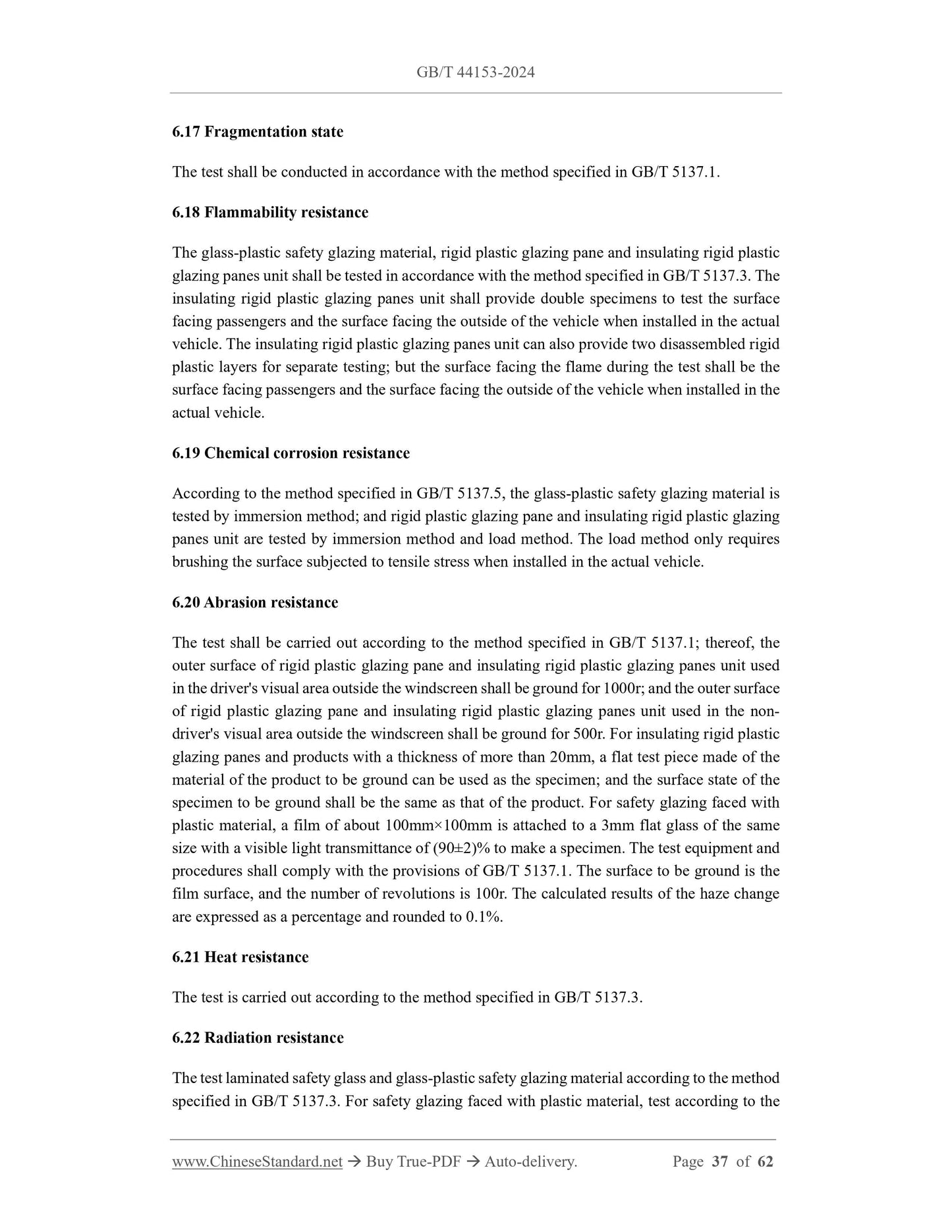1
/
of
12
www.ChineseStandard.us -- Field Test Asia Pte. Ltd.
GB/T 44153-2024 English PDF (GB/T44153-2024)
GB/T 44153-2024 English PDF (GB/T44153-2024)
Regular price
$755.00
Regular price
Sale price
$755.00
Unit price
/
per
Shipping calculated at checkout.
Couldn't load pickup availability
GB/T 44153-2024: General technical requirements for glazing materials used in power-driven vehicles
Delivery: 9 seconds. Download (and Email) true-PDF + Invoice.Get Quotation: Click GB/T 44153-2024 (Self-service in 1-minute)
Newer / historical versions: GB/T 44153-2024
Preview True-PDF
Scope
This Document specifies the terms and definitions, classification, technical requirements, testmethods, inspection rules, packaging, transportation and storage for glazing materials used in
power-driven vehicles.
This Document applies to glazing materials used in power-driven vehicles including Types-M,
-N, -O, and -L vehicles with cabs, as well as agricultural and forestry special vehicles.
This Document does not apply to glass for power-driven vehicle lighting and signal devices
and instrument panels.
Note. For the classification of Types-L, -M, -N, and -O vehicles, see GB/T 15089.
Basic Data
| Standard ID | GB/T 44153-2024 (GB/T44153-2024) |
| Description (Translated English) | General technical requirements for glazing materials used in power-driven vehicles |
| Sector / Industry | National Standard (Recommended) |
| Classification of Chinese Standard | T26 |
| Classification of International Standard | 43.040.60 |
| Word Count Estimation | 50,598 |
| Date of Issue | 2024-06-29 |
| Date of Implementation | 2025-01-01 |
| Issuing agency(ies) | State Administration for Market Regulation, China National Standardization Administration |
Share
